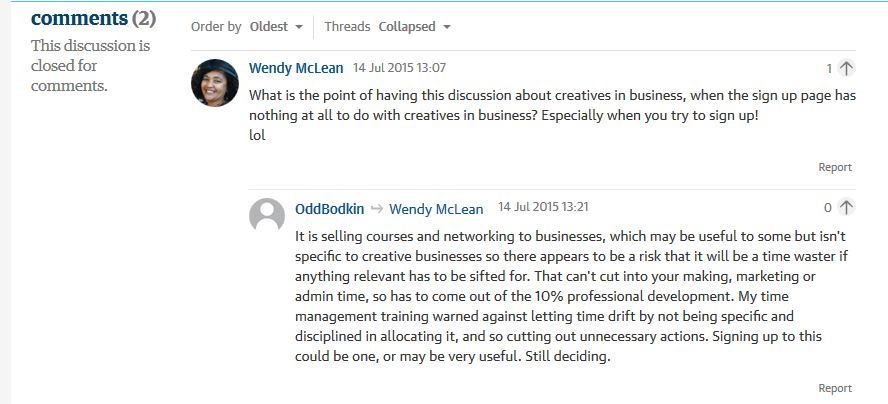Final day of observations on last weekend’s Society for Arts Entrepreneurship in Education (SAEE) conference.
The Terms We Use Matter
Some of the best observations about teaching students entrepreneurship were made by Jeffrey Nytch from the University of Colorado-Boulder. There is a lot of conversation going on about how students need to be taught to be entrepreneurial with attendant ideas of what that means, but Nytch’s observations provide some grounding for that discussion.
He noted that what entrepreneurship is not, is pounding the pavement and marketing one self. Entrepreneurship is creating value and implementing solutions to meet needs, which by definition is not primarily focused on getting yourself employed, but serving others. Among the other characteristics he listed were recognizing opportunity, customer focus, flexibility/adaptability, risk assessment (taking calculated risks), resourcefulness and an ability at storytelling.
He also emphasized that teaching entrepreneurship has to focus on being strategic rather than providing prescriptive solutions like this is how to do marketing, this is how to apply for grants, this is how you get non-profit status etc.
When talking about teaching students to be entrepreneurs, it is probably important to be clear about what outcomes you are envisioning when you use that term. As a result of Nytch’s presentation, I have been careful to use phrases like “entrepreneurial mindset” and “teach students entrepreneurial skills” in previous posts in an attempt to delineate these activities from a engaging in a full entrepreneurial venture.
Mentoring Is Local and Global
There was another conversation about using mentoring to transition students to entrepreneurship. A good deal of the focus was on helping people after they graduated.
Something that came up often during the conference was that university career service offices have a hard time working with arts students because their career path is so nebulous. It is easy to direct students with business, education, science, teaching, pre-law and pre-med degrees because career progression is fairly well understood.
In much the same way, it can be difficult for career services to provide support to entrepreneurs because by definition they seek to walk the road less traveled.
Among the suggestions that were made, most of them by a recent graduate, was using social media to create connections between entrepreneur programs across the country. One could easily find their ideal team members living elsewhere and you don’t necessarily all have to be located in the same geographic area to be productive.
Along the same lines was a suggestion for providing some basic support and access to graduates of partner programs. A person may graduate in one place but move elsewhere to start their venture so it would be good to be able to tap into the list of local mentors another program had identified. (Imagine how great it would be to be recognized for bolstering the local economy by “stealing” graduates of other programs from those communities thanks to your mentor and incubator network.)
It was also suggested that students be invited to the Society for Arts Entrepreneurship in Education (SAEE) conferences so they can share their experiences with the assembled educators. Especially in terms of what aspects of their training did and did not prove valuable to avoid reinventing the wheel or replicating the same mistakes as someone else.
Miscellaneous Thoughts And Resources
Michael Bills who directs the Center for Innovation and Entrepreneurship at Ohio State University said they were only offering entrepreneurship as a minor at the undergraduate level because they felt that entrepreneurship is a graduate level pursuit. (I should note this is a university wide program out of their business school rather specific to an arts entrepreneurship program.)
This is based on the concept of the T shaped skills. Briefly, the vertical bar of the T represents the depth of your skills, the horizontal bar is the ability to collaborate across disciplines. Their thought is that you develop your depth as an undergrad and then really focus on your ability to collaborate as a graduate.
I have heard similar philosophies about fine arts disciplines and know there are some universities that won’t teach arts administration as an undergraduate major based on the same concept.
DePauw University recently created a site called 21CM.org (21st Century Musician) as a resource and place for conversations among musicians about developing an entrepreneurial mindset. It is intentionally devoid of any mention of DePauw other than the copyright notice at the bottom of the page. The About section makes no mention of the school and the conference presenters pointed out the site doesn’t bear DePauw’s colors.
The school took the same approach in establishing a public music space for “courageous music making” in their hometown of Greencastle, IN. The space isn’t branded with DePauw’s name or colors (it actually appears to use the 21CM.org colors) though the website uses DePauw’s domain.
In both cases, the goal is for the community of participants to take ownership of the respective resources.
That is generally the extent of my notes from the conference that fit into the general theme of these three posts. It will be interesting to see how SAEE grows as an organization and how the whole concept of artist as entrepreneur (and how best to teach those skills) evolves over time.
Even as there is a need to introduce this type of instruction in undergraduate/graduate/conservatory training, there is also the obvious unmet need to train people who have passed that stage, may have some career experience and wish to acquire additional skills or engage in a venture of their own.
